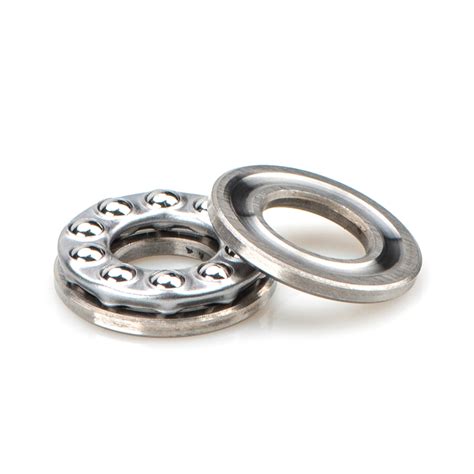**Axial Bearings: The Ultimate Guide to Their Function, Types, and Applications**
Introduction
Axial bearings play a crucial role in various engineering applications by supporting axial loads and guiding rotation. Understanding their function, types, and applications is essential for designers and engineers. This comprehensive guide delves into the world of axial bearings, providing valuable insights to optimize their performance and applications.
Axial Bearing Fundamentals
Definition: Axial bearings are designed to withstand and guide loads applied parallel to the bearing axis. They allow for rotational movement while preventing axial displacement.
Function:

-
Load support: Axial bearings carry axial forces that seek to push components together or pull them apart.
-
Axial guidance: They prevent axial movement, ensuring proper alignment and preventing damage to other components.
Types of Axial Bearings
Various types of axial bearings are available, each with unique characteristics and applications:

1. Thrust Ball Bearings
-
Description: Utilize ball elements between hardened races, providing high load capacity and speed capability.
-
Applications: High-precision machinery, machine tools, and vertical pumps.
2. Thrust Needle Roller Bearings
-
Description: Employ needle rollers between hardened races, offering a compact design and ability to handle heavy axial loads.
-
Applications: Gearboxes, transmissions, and heavy machinery.
3. Thrust Tapered Roller Bearings
-
Description: Utilize tapered rollers between hardened races, providing high load capacity and resistance to moment loads.
-
Applications: Heavy-duty gearboxes, industrial machinery, and wind turbines.
4. Thrust Ceramic Ball Bearings
-
Description: Feature ceramic balls and raceways, offering extreme wear resistance, corrosion resistance, and high-temperature tolerance.
-
Applications: Aerospace, medical equipment, and semiconductor manufacturing.
Applications of Axial Bearings
Axial bearings are widely used in a diverse range of industries, including:
-
Aerospace: Thrust ball bearings and tapered roller bearings provide high load capacity and precision in aircraft engines and landing gear.
-
Automotive: Thrust needle roller bearings handle axial loads in gearboxes and transmissions, improving efficiency and durability.
-
Industrial machinery: Thrust bearings support axial loads in pumps, compressors, and heavy-duty equipment, ensuring smooth operation and longevity.
-
Medical devices: Ceramic ball bearings enable smooth and precise movements in surgical instruments and medical imaging equipment.
Choosing the Right Axial Bearing
Selecting the appropriate axial bearing is crucial for optimal performance and longevity. Factors to consider include:
-
Load capacity: Determine the axial load the bearing must withstand.
-
Speed: Consider the rotational speed of the application.
-
Precision: Specify the required level of axial guidance and accuracy.
-
Environment: Account for the operating temperature, lubrication availability, and presence of contaminants.
Common Mistakes To Avoid
-
Overloading: Exceeding the bearing's rated load capacity can lead to premature failure.
-
Misalignment: Improper alignment can cause bearing damage and reduced performance.
-
Lubrication neglect: Insufficient or improper lubrication can result in increased friction and wear.
-
Incorrect fit: The bearing should be properly fitted to prevent axial movement and ensure optimal load distribution.
-
Contamination: Foreign particles can damage bearing surfaces, reducing their lifespan.
Pros and Cons of Axial Bearings
Pros:
- High axial load capacity
- Axial guidance and stability
- Compact design (for some types)
- Variety of materials and types for diverse applications
Cons:

- Limited radial load capacity
- Can be more susceptible to misalignment
- May require specialized mounting and lubrication
Stories and Lessons Learned
Story 1:
A manufacturer experienced premature failure of axial bearings in a heavy-duty gearbox. Investigation revealed that the bearings were overloaded due to an incorrect gear ratio. By adjusting the gear ratio and selecting higher-capacity bearings, the issue was resolved, extending the lifespan of the gearbox.
Lesson: Overloading axial bearings can lead to premature failure. Careful load calculation and selection of appropriate bearings are essential.
Story 2:
A medical equipment company encountered binding issues in a surgical instrument. Analysis showed that the thrust ceramic ball bearings were improperly lubricated. By implementing a specialized lubrication system, friction was reduced, resulting in smooth and precise movements of the instrument.
Lesson: Proper lubrication of axial bearings is crucial for ensuring optimal performance and reducing wear.

Story 3:
An industrial machinery manufacturer faced excessive noise and vibration in a high-speed pump. Inspection revealed that the thrust needle roller bearings were misaligned. Correcting the alignment and installing higher-precision bearings significantly reduced noise and vibration, improving the pump's efficiency.
Lesson: Misalignment of axial bearings can lead to performance issues and reduce bearing lifespan. Proper alignment and precision bearings are essential for optimal operation.
Call to Action
Whether you are a designer, engineer, or maintenance professional, understanding the nuances of axial bearings is essential for achieving reliable and efficient performance in your applications. By carefully considering the load capacity, speed, precision, environment, and common mistakes to avoid, you can select and implement the right axial bearing solutions for your specific needs. Embrace the insights provided in this guide to optimize your designs and ensure the longevity of your systems.

